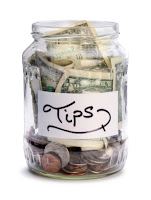"Rule #1: Never Lose Money. Rule #2: Never Forget
Rule #1."
-Warren
Buffett
"The key to success [in investing] lies in avoiding losers, not in
searching for winners."
- Howard S. Marks
The wisdom
above is important for any investment operation. As a DIY investor
working toward a better future for my family, I keep these things in mind. Risk is inherent in everything we do. It’s our job to mitigate that risk while
enjoying life. We don’t eliminate the
risk of an accident by not driving cars; we drive defensively and wear
seatbelts. Vacation travel risk isn’t
diminished by foregoing air transport but by flying well-regulated air
carriers.
If we follow the advice of Buffett and Marks when investing, we
don’t do so by refusing to invest.
Instead, we find ways to reduce investing risks. The aviation reference above provides an apt
launch point for investment risk management.
The flying world has over a century’s worth of experience
developing risk assessment and management techniques. The chart below is a risk assessment template
from the Federal Aviation Administration (FAA).
It maps the probability of an event (hazard) to the severity of its
occurrence to assign a risk level.
 |
| Aviation Risk Assessment Matrix (Federal Aviation Administration) |
An activity or event with a high probability of happening and a
large consequence are the conditions aviators work to modify or avoid. By reducing the chance of occurrence, the
magnitude of the consequence, or both; or avoiding the condition entirely,
pilots and air crew make flying safer.
The great thing about this assessment tool is it requires flyers to
think through risks and mitigation options while giving them a visual queue
helping improve aeronautical decision making.
Knowing this, I thought it would be interesting to apply similar
methods to investment decision making.
Below is a risk assessment chart approximating my risk thought process
when making investment decisions. I judge
the probability of each factor happening as well as the severity of the
consequences if it does. It’s similar to
the FAA’s chart, but with less granularity.
You could make your chart as granular as you like by listing event
probability in 10% increments, for example, or by scaling the same event’s
severity from 1 to 10 with 10 being worst case.
For the purposes of this post, I’m keeping it simple.
|
Probability
/ Severity
|
Small
|
Medium
|
Large
|
|
High
|
|
|
|
|
Medium
|
|
|
|
|
Low
|
|
|
|
My assessment of likelihood and severity is often subjective, but that’s
true of nearly all risk exercises. However,
the effort makes me think through my decisions and, with experience derived
from repetition, I believe my decisions improve.
I can see my decision criteria should fall within the green zone
while avoiding the red. Yellow zones are
somewhat transitional and can lend support one way or another. If the factor is trending toward the red, or
several other factors are already in the red, then a yellow zone factor is
likely to lean toward not investing.
Conversely, if many factors are already green or trending that way, I
might accept a factor in the yellow zone.
This is particularly true if I think a yellow zone item is trending
toward green as well.
Another way to think about this exercise is to consider whether a
risk can be mitigated. Suppose I find a small
company I believe may be a good investment, but I’ve assessed one of its
investment factors in the red. What, if anything, can I do about the risk?
Instead of investing in a small company, I might invest in a similar,
larger company in the same field. Company
size generally reduces the risk a firm goes out of business.
Alternatively, I may decide to invest only a portion of my funds
in the target company while putting the rest in another investment
vehicle. This way I don’t put all my
eggs in one basket reducing risk through diversification.
There are a variety of ways to reduce or avoid risk in
investing. I just have to take the time
to think them threw. Having good tools to
help me do so improves my investment decision making and my returns in the long
run.
“The essence of investment management is the
management of risks, not the management of returns.”
-Benjamin
Graham
The trick is figuring out how to manage my investment risks. Aviation enterprises work hard to ensure people don’t get hurt. Taking a page from the industry’s playbook
and applying it to investing is a good start.
The thoughts and opinions
expressed here are those of the author, who is not a financial
professional. Opinions expressed here should not be considered investment
advice. They are presented for discussion and entertainment purposes
only. For specific investment advice or assistance, please contact a
registered investment advisor, licensed broker, or other financial
professional.







